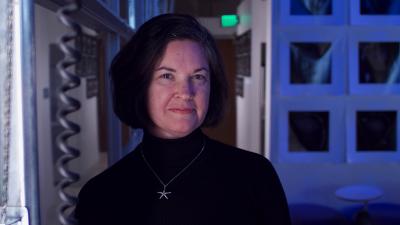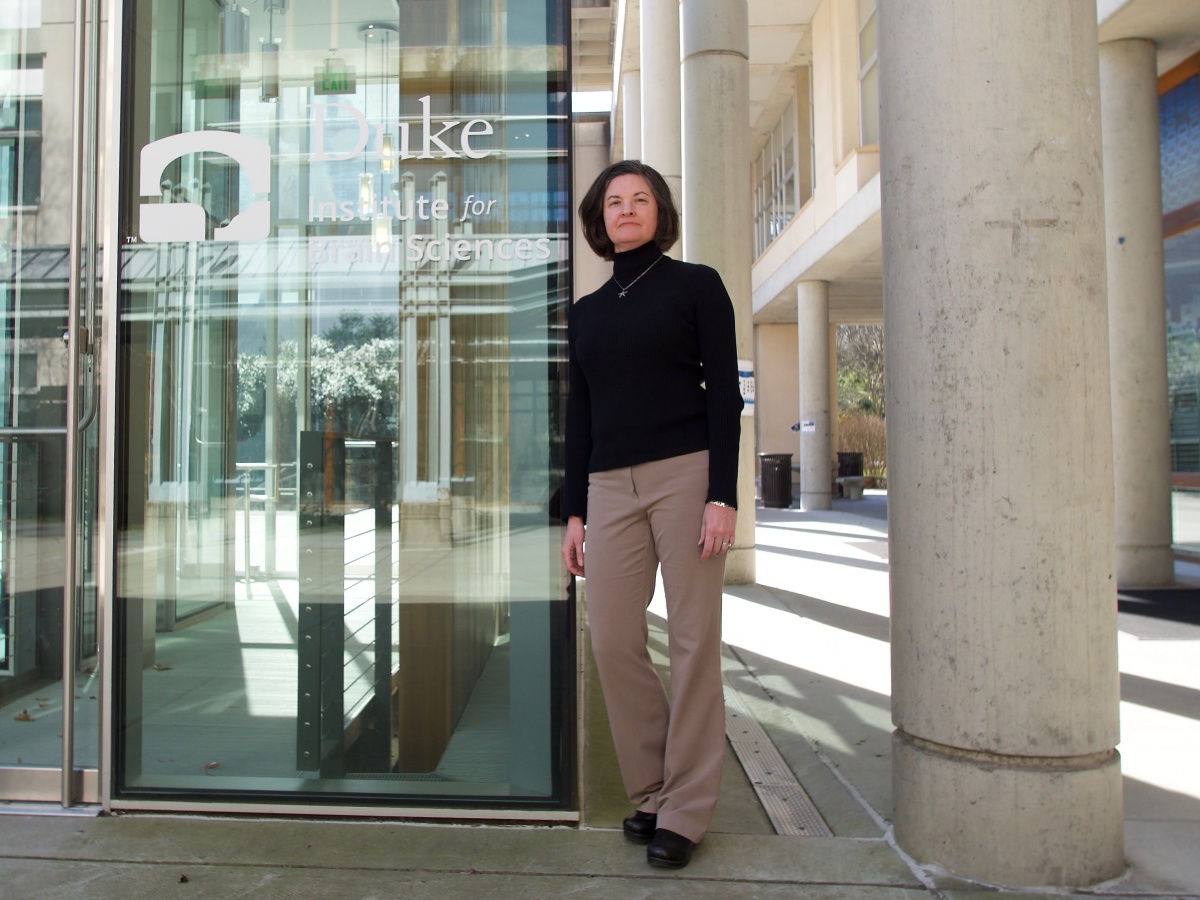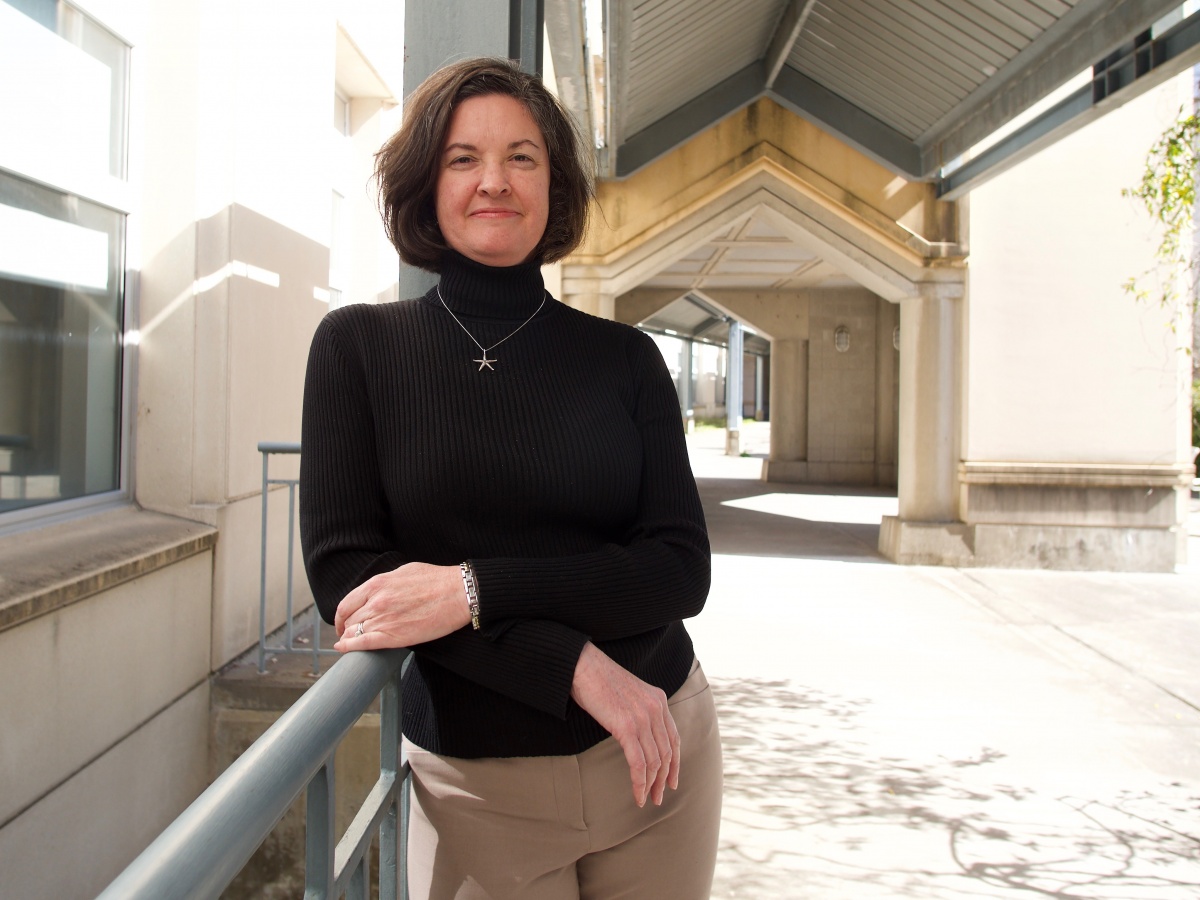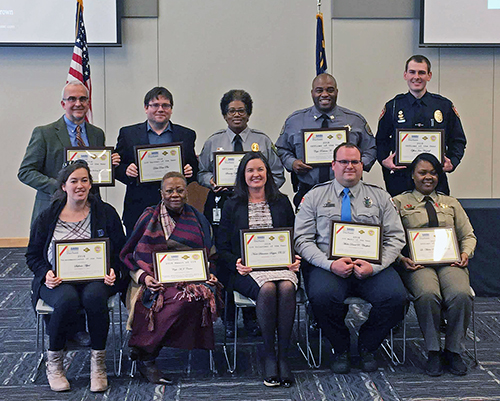

Sure Signs of Addiction: It's More than Just a "Feeling"
Whether it’s finishing this season’s fifth box of Girl Scout cookies or binge-watching a Netflix show, it can be easy for the average, healthy person to think they’re developing a problem.
“I can’t believe I just finished another sleeve of Thin Mints, I’m so addicted,” or “Wow, I’m so addicted to Dexter—just finished the seventh season this weekend!” are common phrases overheard in coffee shops and grocery store lines.
However, when addiction researcher Nicole Schramm-Sapyta, PhD, an associate professor of the practice in the Duke Institute for Brain Sciences, hears these phrases, she knows that these people, more often than not, are not truly addicted. Addiction has a clinical definition: when a person continues to do something despite experiencing major negative consequences. And, she says, this behavior is linked to changes to the brain.

Schramm-Sapyta’s early laboratory research focused on addiction’s effects on a part of the brain called the nucleus accumbens, a bundle of nerve cells also known as the brain’s pleasure center. Satisfying experiences—whether in the form of an addictive drug, monetary reward, sexual encounter, or satisfying meal— trigger the release of a type of “feel good” neurotransmitter called dopamine in this pleasure center. But addictive drugs—substances like alcohol, nicotine and opiates— pack an extra-powerful punch, and the brain is flooded and then overwhelmed by large amounts of dopamine. Over time, the brain will counteract this flooding by down-regulating, or removing, the dopamine receptors.
“When someone repeatedly takes an addictive drug, they lose dopamine receptors, and eventually become anhedonic, or unable to feel pleasure,” said Schramm-Sapyta. “The person is no longer able to feel joy from normal life. So, getting a good grade, seeing an old friend, or having a delicious meal doesn’t feel good. And the only way to feel ‘normal’ again is to get high on the drug. When someone progresses to this stage of addiction, they’re not even enjoying the drug anymore. They’re just taking it to feel normal again.”
Other brain regions add to the process. The brain’s “prioritizer,” the prefrontal cortex, decides that getting more of the drug is a top priority, and the amygdala ramps up negative emotions when it doesn’t get it. Along with the nucleus accumbens, these regions work together to change a person’s response to a drug from simply “liking” it to “wanting” it to “needing” it.
The process of moving from enjoyment to needing the drug can take anywhere from a few months to a few years depending on the person’s susceptibility to addiction, according to Schramm-Sapyta. People who already have underlying mental health issues, such as anxiety, depression, or ADHD, are most vulnerable. Women’s brains also tend to become addicted more quickly than men, though more research is needed to better understand this difference.
“We think of addiction as being a biopsychosocial condition,” she said. “When clinicians treat the biological aspect of the condition—usually with medication—they must also remember to look at the psychosocial aspects of a person’s life that led to the addiction in order to truly guide that person towards recovery.”
Addiction in the Lab
Growing up in North Carolina, Schramm-Sapyta began studying chemical engineering as an undergraduate at NC State University but switched her major to biochemistry, following the advice of a family friend, a pharmacologist at Wake Forest University. She did not regret it.
She went on to earn a PhD in pharmacology at Vanderbilt University, and then accepted a postdoctoral associate position in the lab of Danny Winder, PhD, the Director of the Vanderbilt Center for Addiction Research.
There, she conducted experiments to determine which region of the brain was activated when mice learned how to push a lever and self-administer cocaine. She also began to study addiction and adolescence.
“In the Winder lab, we noticed that it was much easier to observe electrophysiological changes in the nucleus accumbens of adolescent mouse brains than adult mouse brains, which led us to think that might be a mechanism by which adolescents are more vulnerable to addiction than adults,” Schramm-Sapyta said.
After looking deeper, the team came to realize that not all adolescents are more vulnerable to addiction. By studying behavior in mice and rats, the researchers realized that on average, adolescents find drugs of abuse more rewarding and less aversive than adults, but that only some adolescents are more likely to self-administer, or voluntarily take drugs of abuse. The more vulnerable adolescents were more novelty-seeking, less susceptible to the aversive effects of the drugs, and had differences in anxiety levels. For cocaine, less-anxious animals tended to take more, but for alcohol, evidence suggests that more anxious individuals take more.
“Nicole was the first postdoc that I hired in my lab, and I could not have been more fortunate to recruit her,” Winder said. “In those early days of a new lab, having great people around you is key, and Nicole’s enthusiasm, professionalism and intellect all contributed to the foundation of a positive working environment going forward. She did a lot of exciting research in the lab during that time that still influences us today.”
In 2002, Schramm-Sapyta was recruited to Duke University for a postdoctoral research fellowship in the lab of Cynthia Kuhn, PhD, professor of pharmacology and cancer biology, where she continued to study addiction in adolescence.

She introduced a concept to the lab known as a “conditioned taste aversion” in which she showed that rats, who normally favor sugar water over regular water, grew to not choose the sugar water over time when it was paired with an injection of an addictive drug.
“They learned to associate the icky feeling brought on by the injection of the drug with the sweet taste,” said Schramm-Sapyta. What’s more, younger rats were less sensitive to the aversive effects of the drug than the older rats. This model has been repeated in a number of animal and human models since then, with all showing that adolescents are less sensitive to the bad feelings of drug or alcohol abuse than adults.
After Schramm-Sapyta left Kuhn’s lab in 2008 to sign on as a faculty member in the Duke Institute for Brain Sciences (DIBS) and in the Department of Psychiatry and Behavioral Sciences, Kuhn continued to use the conditioned test aversion experiment and applied it to current projects studying conditioned nausea.
“She was a terrific addition to the lab,” Kuhn said. “I have been so proud to see her develop these talents, and, in the process, contribute so much to DIBS and to Duke.”
Addiction in Durham
For Schramm-Sapyta, the early lab work fueled a passion to help people in her community suffering from addiction. After moving into a teaching faculty position, she began to look for ways to partner with the Durham community and involve her students in local research projects.
In 2016, she started working with a Duke Bass Connections Brain & Society team to learn more about the opiate epidemic in Durham. In Bass Connections, students and faculty tackle real-world problems as a team through research, creativity, and collaboration with external partners.
To learn more about the local law-enforcement perspective on drug use, Schramm-Sapyta’s Bass Connections team met with members of the Durham Police Department’s Crisis Intervention Team (CIT). CIT members are police officers and other first responders who have received extensive special training to respond to citizens in crisis, often due to underlying behavioral health issues such as addiction or mental illness. More than 950 first responders in Durham have been CIT-trained since 2007.
When Schramm-Sapyta and her students first met with the CIT officers, a one-hour meeting stretched to more than two hours of open, honest discussion. The students asked hard questions and the officers responded with experience, policy information and honesty. The Bass Connections students were very impressed, and sought to spread the word through their project, “Stemming the Opiate Epidemic Through Education and Outreach.” They organized two CIT presentations on campus and three Mental Health First Aid training sessions, the latter completed by more than 100 members of the Duke community.
Schramm-Sapyta and students were encouraged to return and brainstorm with CIT members about ways Duke could support the program. They learned the CIT had lots of data on 9-1-1 calls but no one to analyze it and make it useful to CIT. Schramm-Sapyta connected with Paul Bendich, associate professor of math and Data+ leader at Duke, and that launched the first Data+/CIT project, “Mental Health Interventions by Durham Police.”
Data+, run by the Rhodes Information Initiative at Duke, is a 10-week summer research experience for undergraduates interested in exploring new data-driven approaches to complex challenges.
The Data+ team’s first project was to analyze 9-1-1 calls between 2011 and 2016 to determine if there were any patterns related to CIT-tagged calls—and they found them. Behavioral health-related calls typically peak on Wednesdays between 8 a.m. and noon, (“Hump Day is real,” said Schramm-Sapyta), but are sparse on Sunday mornings between 4 and 8 a.m.—information CIT could then use to deploy resources.
Students also looked at the number of CIT calls in different areas of the city. Schramm-Sapyta said, “We found that the poorest areas of our city are the greatest users of CIT services.” That’s good news in that it suggests citizens are familiar with CIT and its services, and the services are going where they are most needed, she pointed out. “It also suggests the need for greater mental health services in these areas, so that crises can be averted.”
In 2017, a second Data+ project looked at whether CIT was helping reduce recidivism, i.e., how often convicted criminals are returning to jail after they have been released. Those identified as having a behavioral health issue are much more likely to return to jail, Schramm-Sapyta noted. This time, data were provided by the Durham County Sheriff’s Office and the Durham County Detention Facility.
“Before CIT existed, recidivism was on the rise in Durham,” Schramm-Sapyta said. “As CIT was first established, and the program began to grow, recidivism leveled off.” In the most recent five years, as CIT and Durham have grown rapidly, and other mental health services at the jail and in the community have increased, recidivism has dropped sharply, she noted.
“This is a fantastic example of the potential for really deep, enduring partnerships between Duke and local institutions and law enforcement in the city and county of Durham,” said Ed Balleisen, PhD, Duke’s Vice Provost for Interdisciplinary Studies, who oversees both DIBS and Bass Connections. “These projects ask significant research questions that can inform decision-making and deploy the creativity of Duke’s faculty and students in partnership with local institutions to carry out that research,” he said. “They present their findings with an eye toward allowing decision-makers to see their world more clearly and have a better sense of what’s working and what isn’t.”
Laylon Williams, the Durham CIT Coordinator for First Responders, said working with Schramm-Sapyta and her students has been a boon for his team.
“Our CIT Leadership Team met her and we all absolutely fell in love with her and the kind of person she is,” said Williams. “Nicole has been actively attending our CIT Leadership Meetings every month and she has helped the CIT Team to analyze our data through the Data Plus Project and other City and County analysis. She was awarded with our Volunteer Of The Year Award in 2018 because she helped us to see the effectiveness of our program through the data analysis. We are so thankful for her and all that she does for our Durham CIT Team and our Durham Community.”

Len White, second row, far left, and Paul Bendich, next to White,
at 2018 CIT Awards Banquet.
In 2020, Schramm-Sapyta expanded the project by adding another data set: health records of more than 17,000 people who have migrated through the Durham County Jail and were also seen at Duke Health between 2014-2018. The jail shared names with Duke Health’s Analytic Center of Excellence, which then matched the names to health records but removed identifying information such as names and addresses to keep the data set confidential.
This summer, a new cohort of students in the Data+ program will help Schramm-Sapyta crunch the data to determine connections between mental health diagnoses and returns to jail.
“We want to know if there is anything that Duke, the county, or the jail can do differently to help these people,” she said. “The idea is to see what’s working, what can be improved.”
Kathy Neal, DIBS, and Sarah Dwyer, Interdiscplinary Studies, contributed to this story.
All photography by Joshua Chorman. Chorman is a Video Producer/Director at the Duke School of Medicine, and manages the @dukemdprogram Instagram/Facebook page.
Lindsay Key is the science writer for the Duke University School of Medicine, and editor of the online storytelling magazine Magnify.
HeadScratchers Podcast
Podcast Transcript:
I think that's the most hopeful thing that I have learned in all of my years of research and getting to know people in recovery; recovery is absolutely possible, but since it's a bio-psycho-social problem, we have to bring biological, and psychological, and sociological solutions to the problem. I will tell you that what has most inspired me about meeting people who are in recovery is the perspective that they have. They've been to the depths, done things that they absolutely regret, you know -- stolen from family members just to buy drugs, lied to their family members -- all these horrible things that we know are true of someone in active addiction. And yet, they've managed to recover from that and, in many cases, repair old relationships -- figure out what really matters to them in life. The main antidote for addiction is a life filled with meaning and purpose. So if I have amazing reasons -- wonderful family, wonderful job, good friends -- good reasons to get up out of bed and not get high every day, I've got an amazing life. And so, people in recovery have a very intentional sense of that. They know what their purpose is in life. They know what, what gives them meaning. And I find that incredibly inspiring.